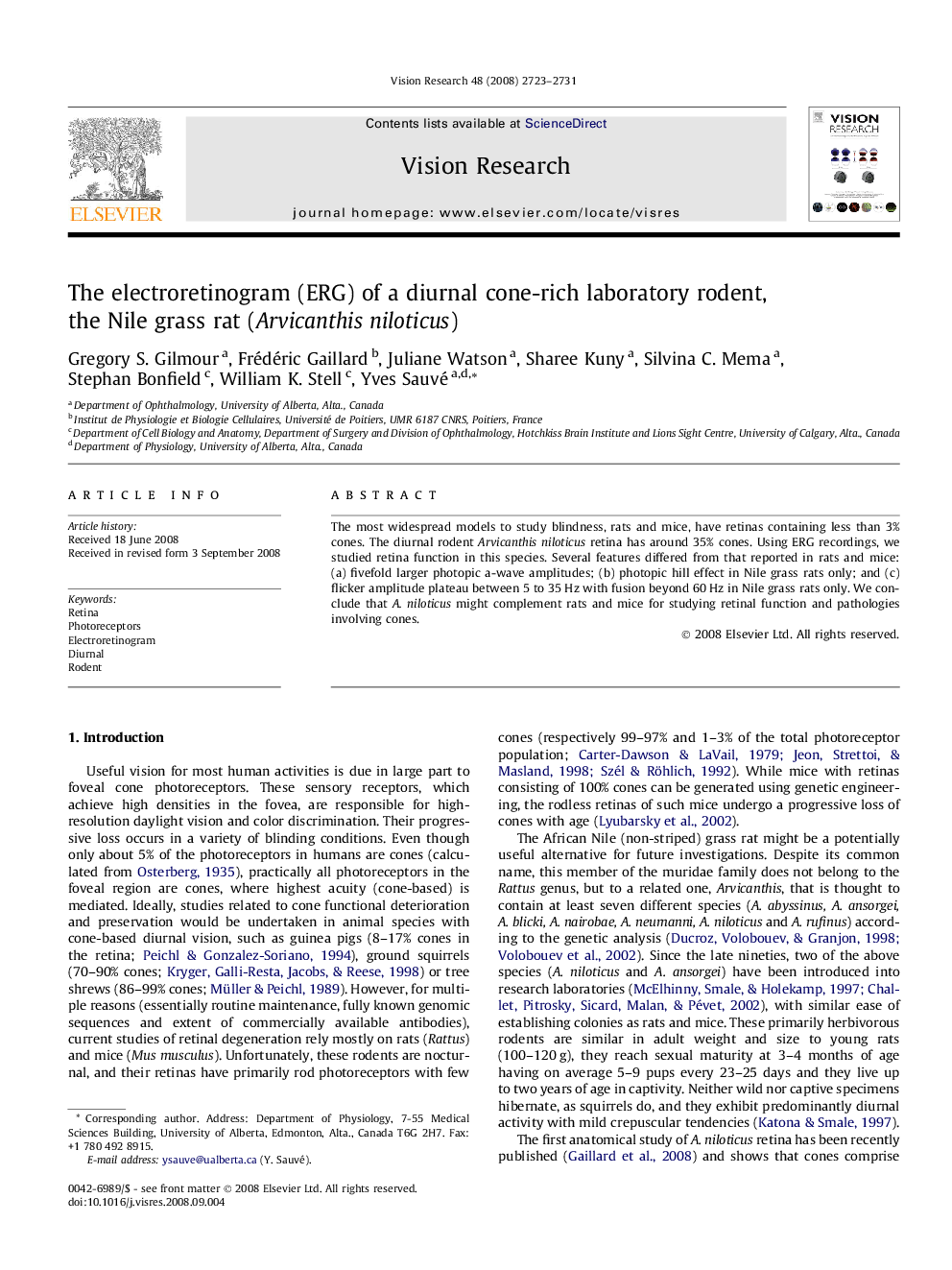| Article ID | Journal | Published Year | Pages | File Type |
|---|---|---|---|---|
| 4035047 | Vision Research | 2008 | 9 Pages |
Abstract
The most widespread models to study blindness, rats and mice, have retinas containing less than 3% cones. The diurnal rodent Arvicanthis niloticus retina has around 35% cones. Using ERG recordings, we studied retina function in this species. Several features differed from that reported in rats and mice: (a) fivefold larger photopic a-wave amplitudes; (b) photopic hill effect in Nile grass rats only; and (c) flicker amplitude plateau between 5 to 35 Hz with fusion beyond 60 Hz in Nile grass rats only. We conclude that A. niloticus might complement rats and mice for studying retinal function and pathologies involving cones.
Related Topics
Life Sciences
Neuroscience
Sensory Systems
Authors
Gregory S. Gilmour, Frédéric Gaillard, Juliane Watson, Sharee Kuny, Silvina C. Mema, Stephan Bonfield, William K. Stell, Yves Sauvé,
